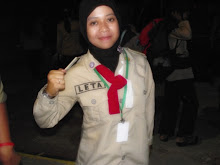Archive for November 2011
Tips on Implementation
.
Compared with traditional teaching methods, the jigsaw classroom has several advantages:
- Most teachers find jigsaw easy to learn
- Most teachers enjoy working with it
- It can be used with other teaching strategies
- It works even if only used for an hour per day
- It is free for the taking
 Too good to be true? Well, yes and no. It would be misleading to suggest that the jigsaw sessions always go smoothly. Occasionally, a dominant student will talk too much or try to control the group. How can we prevent that? Some students are poor readers or slow thinkers and have trouble creating a good report for their group. How can we help them? At the other end of the talent continuum, some students are so gifted that they get bored working with slower students. Is the jigsaw technique effective with them? In some cases, students may never have experienced cooperative learning before. Will the jigsaw technique work with older students who have been trained to compete with one another? All of these problems are real but not fatal.
Too good to be true? Well, yes and no. It would be misleading to suggest that the jigsaw sessions always go smoothly. Occasionally, a dominant student will talk too much or try to control the group. How can we prevent that? Some students are poor readers or slow thinkers and have trouble creating a good report for their group. How can we help them? At the other end of the talent continuum, some students are so gifted that they get bored working with slower students. Is the jigsaw technique effective with them? In some cases, students may never have experienced cooperative learning before. Will the jigsaw technique work with older students who have been trained to compete with one another? All of these problems are real but not fatal. The Problem of the Dominant Student
Many jigsaw teachers find it useful to appoint one of the students to be the discussion leader for each session, on a rotating basis. It is the leader's job to call on students in a fair manner and try to spread participation evenly. In addition, students quickly realize that the group runs more effectively if each student is allowed to present her or his material before question and comments are taken. Thus, the self interest of the group eventually reduces the problem of dominance.
The Problem of the Slow Student
Teachers must make sure that students with poor study skills do not present an inferior report to the jigsaw group. If this were to happen, the jigsaw experience might backfire (the situation would be akin to the untalented baseball player dropping a routine fly ball with the bases loaded, earning the wrath of teammates). To deal with this problem, the jigsaw technique relies on "expert" groups. Before presenting a report to their jigsaw groups, each student enters an expert group consisting of other students who have prepared a report on the same topic. In the expert group, students have a chance to discuss their report and modify it based on the suggestions of other members of their expert group. This system works very well. In the early stages, teachers may want to monitor the expert groups carefully, just to make sure that each student ends with an accurate report to bring to her or his jigsaw group. Most teachers find that once the expert groups get the hang of it, close monitoring becomes unnecessary.
The Problem of Bright Students Becoming Bored
Boredom can be a problem in any classroom, regardless of the learning technique being used. Research suggests, however, that there is less boredom in jigsaw classrooms than in traditional classrooms. Youngsters in jigsaw classes report liking school better, and this is true for the bright students as well as the slower students. After all, being in the position of a teacher can be an exciting change of pace for all students. If bright students are encouraged to develop the mind set of "teacher," the learning experience can be transformed from a boring task into an exciting challenge. Not only does such a challenge produce psychological benefits, but the learning is frequently more thorough.
The Problem of Students Who Have Been Trained to Compete
Research suggests that jigsaw has its strongest effect if introduced in elementary school. When children have been exposed to jigsaw in their early years, little more than a "booster shot" (one hour per day) of jigsaw in middle school and high school is required to maintain the benefits of cooperative learning. But what if jigsaw has not been used in elementary school? Admittedly, it is an uphill battle to introduce cooperative learning to 16-year olds who have never before experienced it. Old habits are not easy to break. But they can be broken, and it is never too late to begin. Experience has shown that although it generally takes a bit longer, most high school students participating in jigsaw for the first time display a remarkable ability to benefit from the cooperative structure.
In Conclusion
Some teachers may feel that they have already tried a cooperative learning approach because they have occasionally placed their students in small groups, instructing them to cooperate. Yet cooperative learning requires more than seating youngsters around a table and telling them to share, work together, and be nice to one another. Such loose, unstructured situations do not contain the crucial elements and safeguards that make the jigsaw and other structured cooperative strategies work so well.
jigsaw class room
.
The jigsaw classroom is a cooperative learning technique with a three-decade track record of successfully reducing racial conflict and increasing positive educational outcomes. Just as in a jigsaw puzzle, each piece--each student's part--is essential for the completion and full understanding of the final product. If each student's part is essential, then each student is essential; and that is precisely what makes this strategy so effective.
Here is how it works: The students in a history class, for example, are divided into small groups of five or six students each. Suppose their task is to learn about World War II. In one jigsaw group, Sara is responsible for researching Hitler's rise to power in pre-war Germany. Another member of the group, Steven, is assigned to cover concentration camps; Pedro is assigned Britain's role in the war; Melody is to research the contribution of the Soviet Union; Tyrone will handle Japan's entry into the war; Clara will read about the development of the atom bomb.
Eventually each student will come back to her or his jigsaw group and will try to present a well-organized report to the group. The situation is specifically structured so that the only access any member has to the other five assignments is by listening closely to the report of the person reciting. Thus, if Tyrone doesn't like Pedro, or if he thinks Sara is a nerd and tunes her out or makes fun of her, he cannot possibly do well on the test that follows.
 To increase the chances that each report will be accurate, the students doing the research do not immediately take it back to their jigsaw group. Instead, they meet first with students who have the identical assignment (one from each jigsaw group). For example, students assigned to the atom bomb topic meet as a team of specialists, gathering information, becoming experts on their topic, and rehearsing their presentations. We call this the "expert" group. It is particularly useful for students who might have initial difficulty learning or organizing their part of the assignment, for it allows them to hear and rehearse with other "experts."
To increase the chances that each report will be accurate, the students doing the research do not immediately take it back to their jigsaw group. Instead, they meet first with students who have the identical assignment (one from each jigsaw group). For example, students assigned to the atom bomb topic meet as a team of specialists, gathering information, becoming experts on their topic, and rehearsing their presentations. We call this the "expert" group. It is particularly useful for students who might have initial difficulty learning or organizing their part of the assignment, for it allows them to hear and rehearse with other "experts."
Once each presenter is up to speed, the jigsaw groups reconvene in their initial heterogeneous configuration. The atom bomb expert in each group teaches the other group members about the development of the atom bomb. Each student in each group educates the whole group about her or his specialty. Students are then tested on what they have learned about World War II from their fellow group member.
What is the benefit of the jigsaw classroom? First and foremost, it is a remarkably efficient way to learn the material. But even more important, the jigsaw process encourages listening, engagement, and empathy by giving each member of the group an essential part to play in the academic activity. Group members must work together as a team to accomplish a common goal; each person depends on all the others. No student can succeed completely unless everyone works well together as a team. This "cooperation by design" facilitates interaction among all students in the class, leading them to value each other as contributors to their common task.
Did you Know???? *No Gas*
.
the price of oil went from $3 a barrel to $12. OrdinaryAmericans felt the strain at the gas pump, whererestrictions were put in place. U.S. drivers whose vehiclelicense plates ended in an odd number could purchasegas only on odd-numbered days of the month. Driverswhose license plates ended in even numbers could buygas only on even-numbered days of the month. In someareas, stations used a three-fl ag system to indicate theavailability of gas. If a green fl ag was fl ying, anyone couldbuy gas. A yellow fl ag meant there were restrictions onthe sale of gas. A red fl ag meant the station had no gasfor sale. In the last week of February 1974, 20 percent ofU.S. gas stations had no fuel at all.



